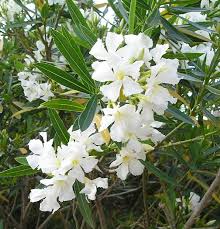Wednesday, 17 February 2010
Visit Wednesday Feb 17
Photographs taken on Feb 17
I asked about the tree pruning and George said that the cutting lorry had been called off because of the rain. He then darted off and produced two plants of Bergenia, part of the collection I had brought the previous day as suitable material for the ground cover: evergreen, winter flowering, quickly spreading and tolerating shade. He proposed to plant them on either side of the Durrell memorials facing the front gate. Not enough Bergenia: He declared indignantly that there were not enough plants to fill the beds. I said they were never intended to be in the beds but to spread and cover the ground under the trees. They only flower in the winter anyway and would look rather dull as the first plants one saw on entering. I am sure the Durrell bros would concur. I told him as politely as I could as I could that it would be his job to clip the ivy round the trunk before it started to scale the heights, and that it was never too late to do that. Even if ivy reaches the top branches, one can still chop it down at ground level and, if one wishes, eventually tease off the clinging suckering stems. They will die off anyway. Along the waterfront side there is a long row of clipped bay trees trained to a ball shape at about 1½ metre intervals. I suggest that the same be planted at the four corners of the central fountain area, in place of the inevitable marigold beds. It would certainly add some style to the entrance. There are also ugly carbuncles rising out of the four sides filled with what I suspect to be more marigolds. When I contrasted them favourably to the Bosketto Team, the knee-jerk response was that they were maintained and financed by the Port Authority, which had more financial resources. As far as I can see, the plants in the beds are entirely self-sufficient and perennial - no constant moving and replanting - only clipping over and tidying according to the seasons. British Cemetery, Corfu ~ And for more contrasts, there is the ultimate example of the British Cemetery. Maintained solely by an old man in his 80s, the British Cemetery occupies an area several times the size of the Bosketto. It is also one of the island's Must-See tourist attractions, despite receiving no financial support from this direction. An example for us and something to aspire to. This morning I made my fifth visit to the garden, timing arrival for what we had been informed would be the tree pruning with the truck arriving around 9am.
This morning I made my fifth visit to the garden, timing arrival for what we had been informed would be the tree pruning with the truck arriving around 9am.






 It has a completely green and white presentation, by which I mean white oleanders among variegated green planting: well placed branches, shade and open areas equally distributed.
It has a completely green and white presentation, by which I mean white oleanders among variegated green planting: well placed branches, shade and open areas equally distributed. It is famous for its wild orchids and in season is spangled with cyclamen and snowdrops.
It is famous for its wild orchids and in season is spangled with cyclamen and snowdrops.Summary of Feb 17 visit
 Most urgent ~ Tidy and improve exterior of WC public lavatory at south-end entrance
Most urgent ~ Tidy and improve exterior of WC public lavatory at south-end entranceInstal and improve seating for adults. This could include easy-to-make pergolas at both road and coast ends for better shade.
See the diagram showing how they'd fit easily over the many benches spread around, not all positioned with thought or offering real repose.
Stone or gravel path: I suggest a narrow winding path, stone laid or gravel and edged with:
All these are tolerant of the deepest shade.
Trimming the ivy: The gardening staff seem nervous of ivy as if certain it will engulf the whole garden.
Keeping it under control would give them something to do to ensure it does not.
Not enough time! ~ There'll be time a-plenty once the 'fiddly' annuals are eliminated and there's no more watering required.
This depends on them accepting the suggestion of plants and removal of benches.
Subscribe to Comments [Atom]

Post a Comment